|
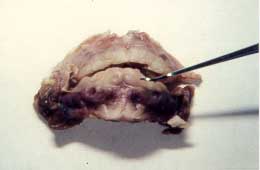
This is a fetal jaw near birth. Note the primary teeth are largely formed. We will focus on the top of the incisors, near
the gum line. This part of the teeth forms just after birth.
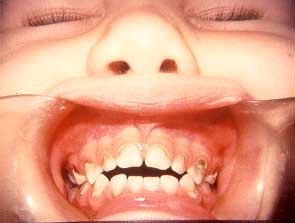
One type of decay we'd like to prevent is now called "Early Childhood Caries", or ECC. Those who have seen it know
it developes very rapidly, and often destroys the child's front teeth within a few months.
The obvious time to prescribe
fluoride to prevent ECC is during pregnancy. However, it may be possible to prevent ECC with fluoride starting at birth. (Above
photos from the Drs. Glenn; the fetal jaw one was given to them by Dr. Leon Singer I think.)
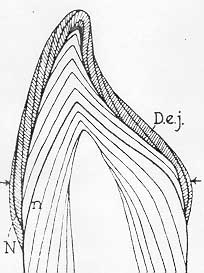
Above is a drawing of the neonatal line on a primary incisor. The neonatal
line is formed in teeth where they are forming at the time of birth. (N shows the line in the enamel, n shows it in dentin).
The area of the tooth that is hit with ECC is just on the birth side of the neonatal line. In other words, this critical enamel
(arrows) forms just after birth. (Drawing from Schour I, Poncher HG. Rate of apposition of enamel and dentin, measured by
the effect of acute fluorosis. American Journal of Diseases of Children 1937; 54:757-776.)
Below is a chart showing the quality of enamel formed at different times
of a child's life. Note the particularly steep drop off between pregnancy (the best) and infancy (the worst). When you get
to the cases below, note how the pregnancy enamel shows no sign of the attack, even as the infancy enamel crumbles.
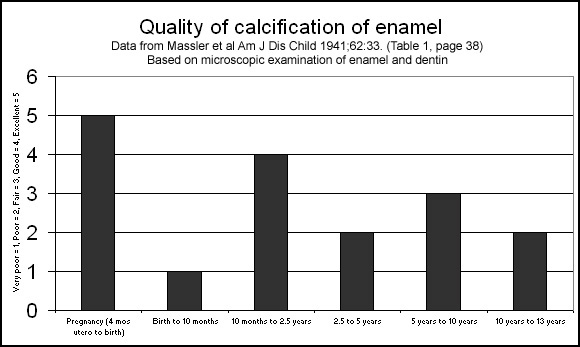
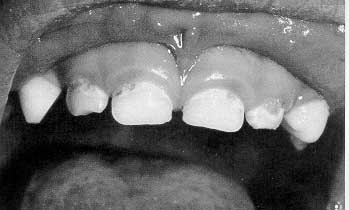
Above is a photo of the first visible signs of ECC. Below is a little later stage. (Photos from Milnes AR. Description and
epidemiology of nursing caries. [Review]. Journal of Public Health Dentistry 1996; 56(1);:38-50. Excellent pictures of the
progression of ECC.)
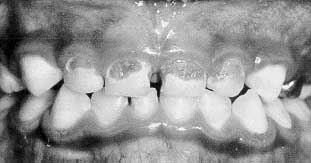
Comparing our recipe and the status quo
|



